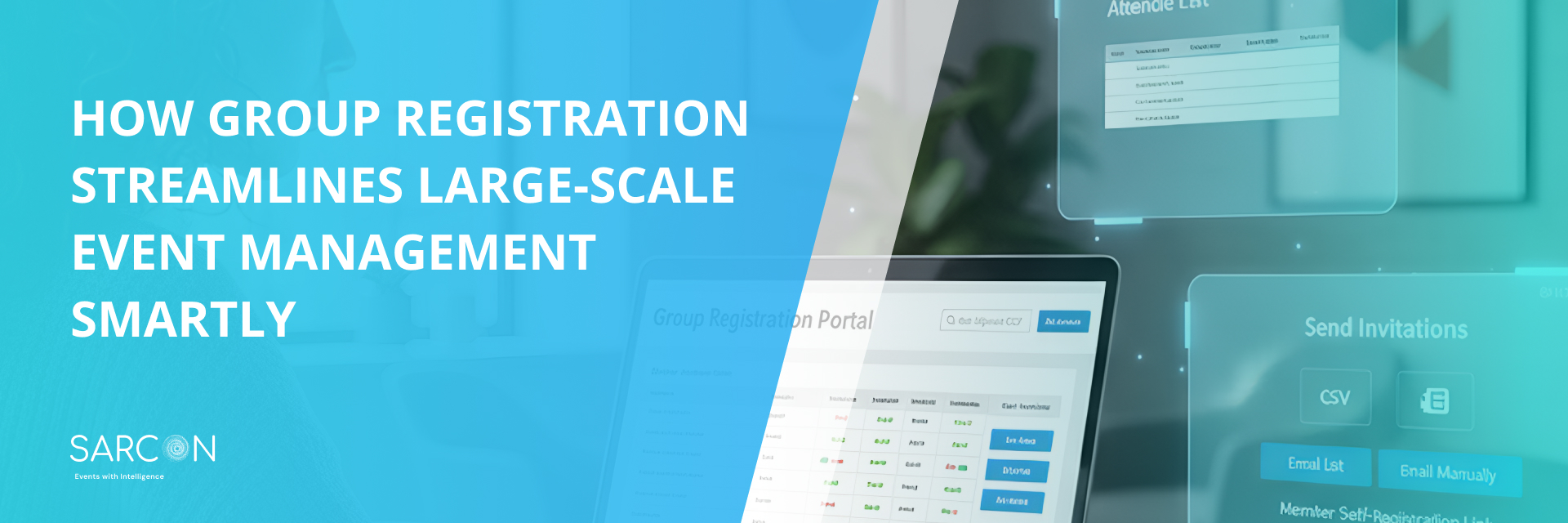The journey to a memorable event experience begins the moment attendees arrive, making the efficiency of on-site event registration and check-in a cornerstone of event success. These initial processes are more than just logistical steps; they are the first interaction attendees have with your event and can significantly influence their overall perception. Optimizing these processes not only enhances attendee satisfaction but also streamlines operational workflows, setting the stage for a successful event. This comprehensive guide offers actionable strategies and innovative solutions to ensure your event starts on a high note.
The Importance of Efficient On-site Event Registration and Check-in
First impressions are lasting. The ease with which attendees can register and check into your event speaks volumes about your organizational skills and attention to detail. An efficient, hassle-free process can boost attendee morale and set a positive tone for the entire event, whereas delays and confusion can start things off on the wrong foot. By prioritizing these initial interactions, you lay the groundwork for a smooth and enjoyable event experience.
Tips to Simplify On-site Event Registration and Check-in
1. Streamlining Registration Processes
- Quick Registration Tips: Simplifying the registration process begins with clear communication and organization. Prior to the event, provide attendees with all the necessary information, including what to bring for verification and how to navigate the venue. At the event, clear signage and dedicated lanes for different attendee types (e.g., VIPs, speakers, pre-registered guests) can minimize confusion and speed up the process.
- Advanced Registration Software: Leveraging technology can transform the registration experience. Advanced registration platforms offer features like online registration, automated confirmations, and on-demand badge printing. These tools not only make the process more convenient for attendees but also provide organizers with valuable data for future events.
2. Enhancing Check-in Efficiency
- Self-Service Check-in Stations: Self-service kiosks can dramatically reduce wait times by empowering attendees to check themselves in. Equipped with intuitive interfaces, these stations can also handle on-the-spot registrations, payments, and even print badges, streamlining the check-in process significantly.
- Mobile Check-in Solutions: Mobile check-in solutions offer a modern, efficient way to manage event entry. Attendees can check in using their smartphones, often through a dedicated event app or QR code. This method reduces the need for physical documentation, expediting entry even further.
3. Leveraging Technology for a Smooth Experience
- QR Codes and Digital Tickets: QR codes and digital tickets provide a seamless and contactless check-in option. Attendees can simply present a code on their mobile device, which can be scanned to confirm attendance and register entry. This approach not only speeds up the process but also supports environmental sustainability by reducing the need for paper tickets.
- Event Apps for Engagement and Management: Comprehensive event apps can serve multiple functions, from facilitating check-in to enhancing attendee engagement. These apps can offer interactive schedules, networking opportunities, and even live updates, making them a valuable tool for both organizers and attendees.
4. Personalizing the Attendee Experience
- Custom Badges and RFID Technology: RFID technology and custom badges add a layer of personalization and functionality to the event experience. Beyond simplifying check-in, these technologies can enable features like access control, cashless payments, and personalized interaction with exhibitors or sessions, enriching the attendee experience.
5. Handling Peak Times and Avoiding Bottlenecks
- Staff Training and Deployment Strategies: Effectively managing peak check-in times requires a combination of well-trained staff and strategic planning. Anticipating high-traffic periods and deploying staff accordingly, including roving teams to assist with questions or issues, ensures a smooth flow and minimizes wait times.
6. Data Collection and Analytics for Continuous Improvement
- Real-time Feedback Collection: Collecting feedback in real-time allows for immediate adjustments and provides insights for future events. Whether through digital surveys or interactive kiosks, understanding attendee experiences as they happen can help refine the registration and check-in processes.
7. Safety and Security Measures
- Implementing Robust Security Protocols: While streamlining entry, it’s crucial to maintain high security standards. Implementing measures such as ID verification, bag checks, and secure data handling ensures that safety is not compromised in the pursuit of efficiency.
8. Creating an Inclusive Event Environment
- Accessibility Features and Considerations: Ensuring that your registration and check-in processes are accessible to everyone is essential. This includes physical accommodations, as well as considerations for sensory and cognitive disabilities, ensuring that all attendees can navigate these processes smoothly.
9. Eco-friendly Practices in Event Registration and Check-in
- Paperless Processes and Sustainable Materials: Embracing paperless processes and sustainable materials for badges and other registration elements can significantly reduce your event’s environmental footprint. Digital tickets, online registration, and eco-friendly badge options are just a few ways to promote sustainability.
10. Post-event Evaluation and Feedback
- Survey Distribution and Analysis: Gathering feedback post-event is crucial for continuous improvement. Analyzing survey responses allows organizers to identify strengths and areas for improvement, ensuring that future events can be even more successful.
FAQs
How can technology facilitate smoother on-site event registration?
Technology like Sarcon can significantly streamline on-site event registration by automating many of the processes involved. For example, online registration systems allow attendees to register and pay before the event, reducing the need for manual input and waiting times at the event itself. Sarcon’s Mobile check-in app enable attendees to check in with their smartphones, using QR codes or digital tickets, which speeds up entry and reduces queues. Additionally, custom badges can provide a more personalized experience while also facilitating access control and interaction within the event.
What strategies are effective for managing large crowds at check-in?
To effectively manage large crowds at check-in, consider implementing the following strategies:
- Pre-event Communication: Clearly communicate with attendees about what to expect at check-in, including what identification or confirmation they need to bring. This can reduce confusion and speed up the process.
- Multiple Check-in Points: Set up multiple check-in points or lanes designated for different types of attendees (e.g., VIPs, speakers, general admission) to distribute the crowd more evenly.
- Self-service Options: Provide self-service kiosks or mobile check-in options to allow attendees to check themselves in without waiting in line for a staff member.
- Trained Staff and Volunteers: Ensure that staff and volunteers are well-trained and knowledgeable about the check-in process to handle inquiries efficiently and keep lines moving.
- Peak Time Management: Identify peak arrival times and plan accordingly by increasing the number of staff or opening more check-in points during these times.
How can events ensure accessibility during the check-in process?
Ensuring accessibility during the check-in process involves several key considerations:
- Physical Accessibility: Ensure that all check-in areas are physically accessible to people with mobility challenges, including wheelchair users. This includes accessible counters, ramps, and signage.
- Sensory Accessibility: Provide clear, easy-to-read signage and consider offering check-in assistance for attendees with visual or hearing impairments.
- Alternative Formats: Offer registration materials and information in multiple formats, such as large print, braille, or digital formats that are screen-reader friendly.
- Staff Training: Train staff and volunteers on how to assist attendees with various accessibility needs effectively and respectfully.
What are eco-friendly approaches to event registration?
Eco-friendly approaches to event registration include:
- Digital Registration and Tickets: Use online registration systems and digital tickets to reduce the need for paper.
- Sustainable Materials: If physical badges or materials are necessary, opt for sustainable materials such as recycled paper or biodegradable plastics.
- Reduce Waste: Encourage attendees to bring their own pens for any necessary paperwork and set up recycling bins at the registration area for any disposable materials.
- Paperless Check-in: Implement QR codes or digital ticket scanning to eliminate the need for printed confirmation emails or tickets.
Conclusion
Simplifying on-site event registration and check-in is fundamental to the success of any event. By embracing technology, focusing on attendee experience, and constantly seeking feedback for improvement, event organizers can ensure a seamless and positive start to their events. Remember, the foundation of an unforgettable event experience is built at the entrance.


